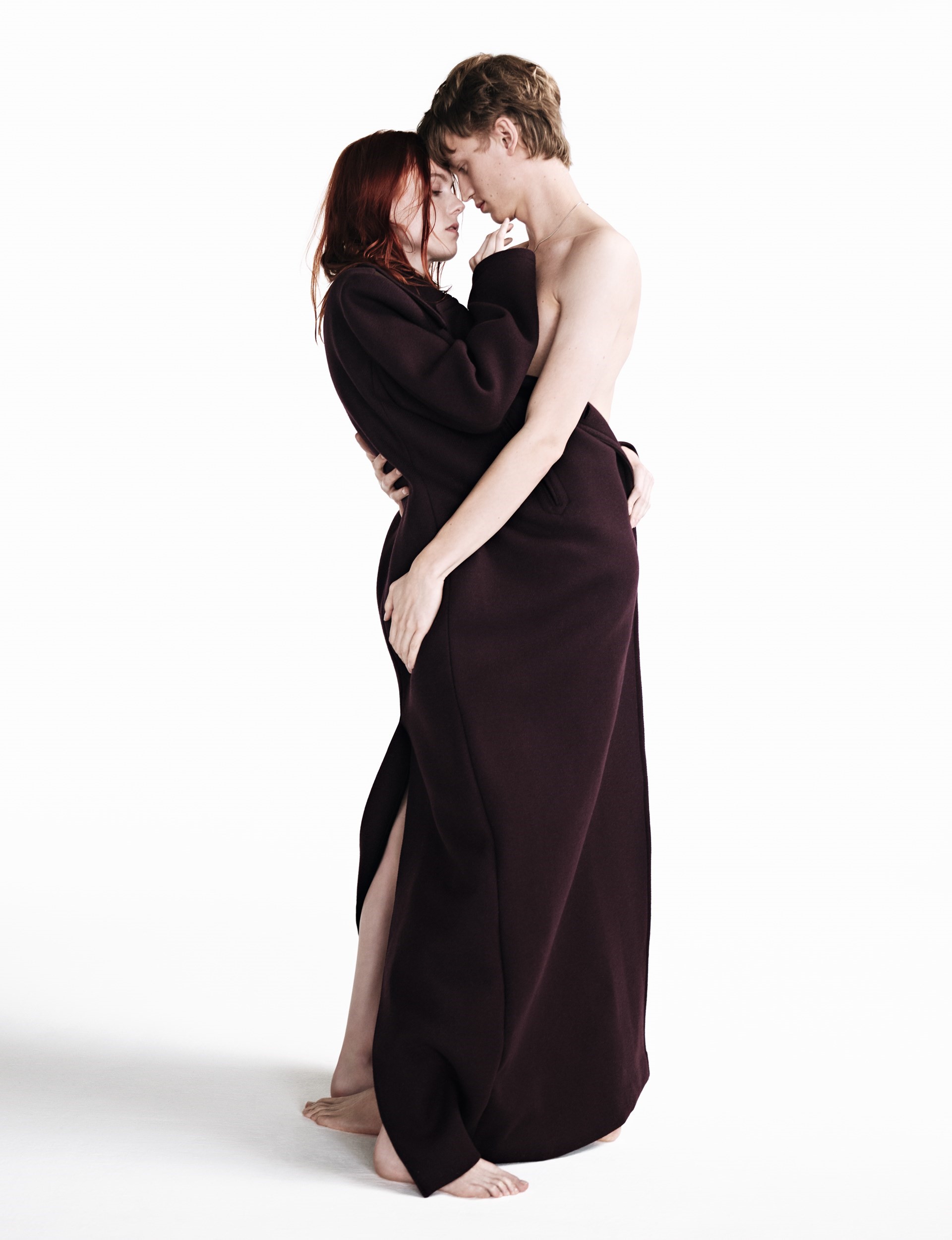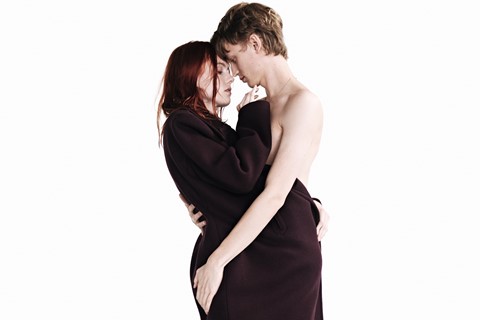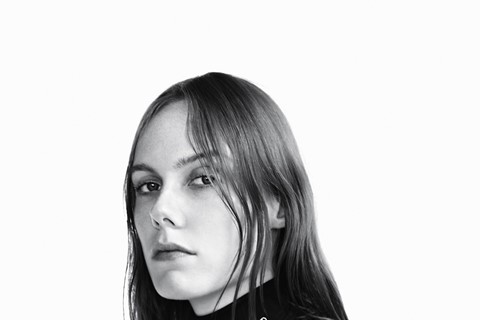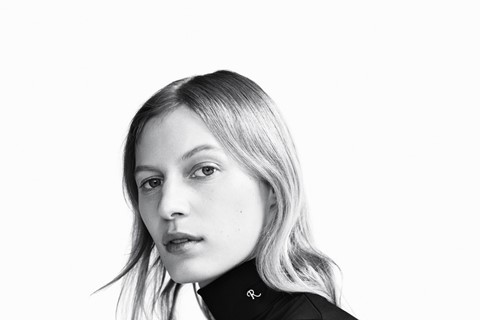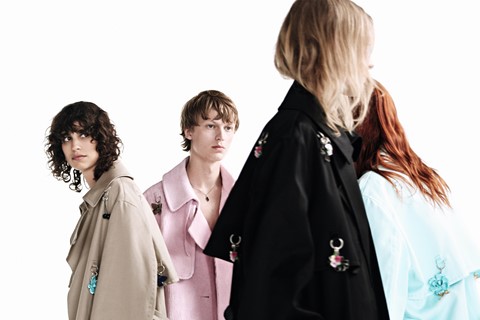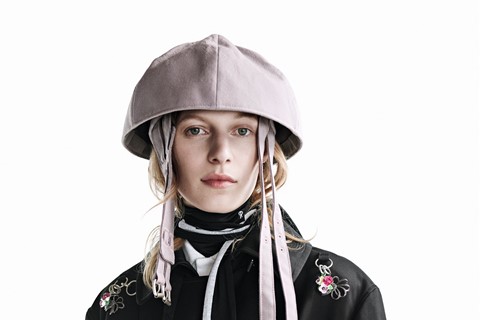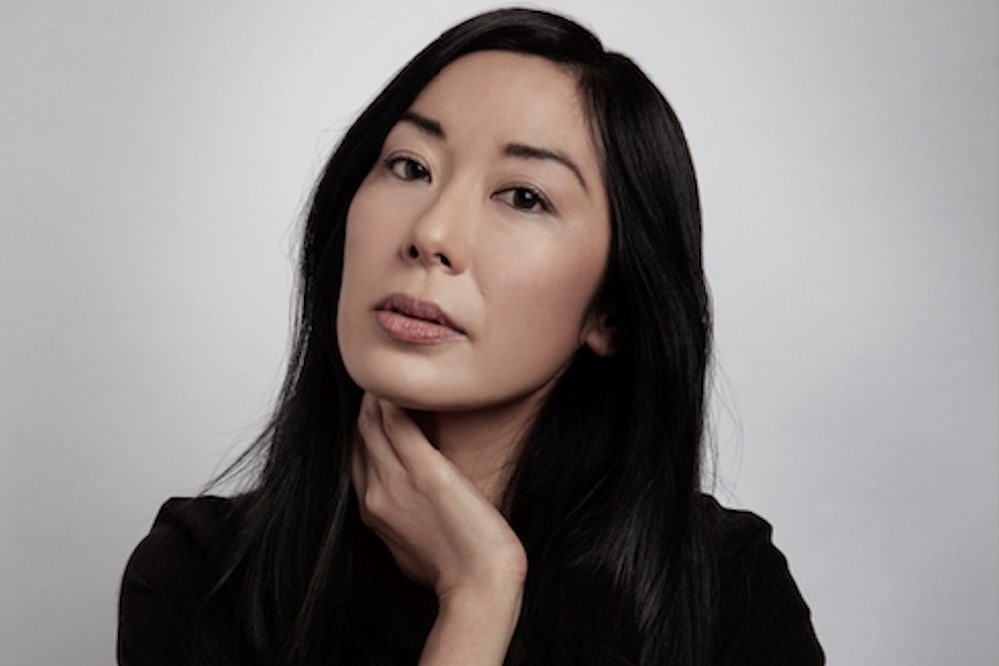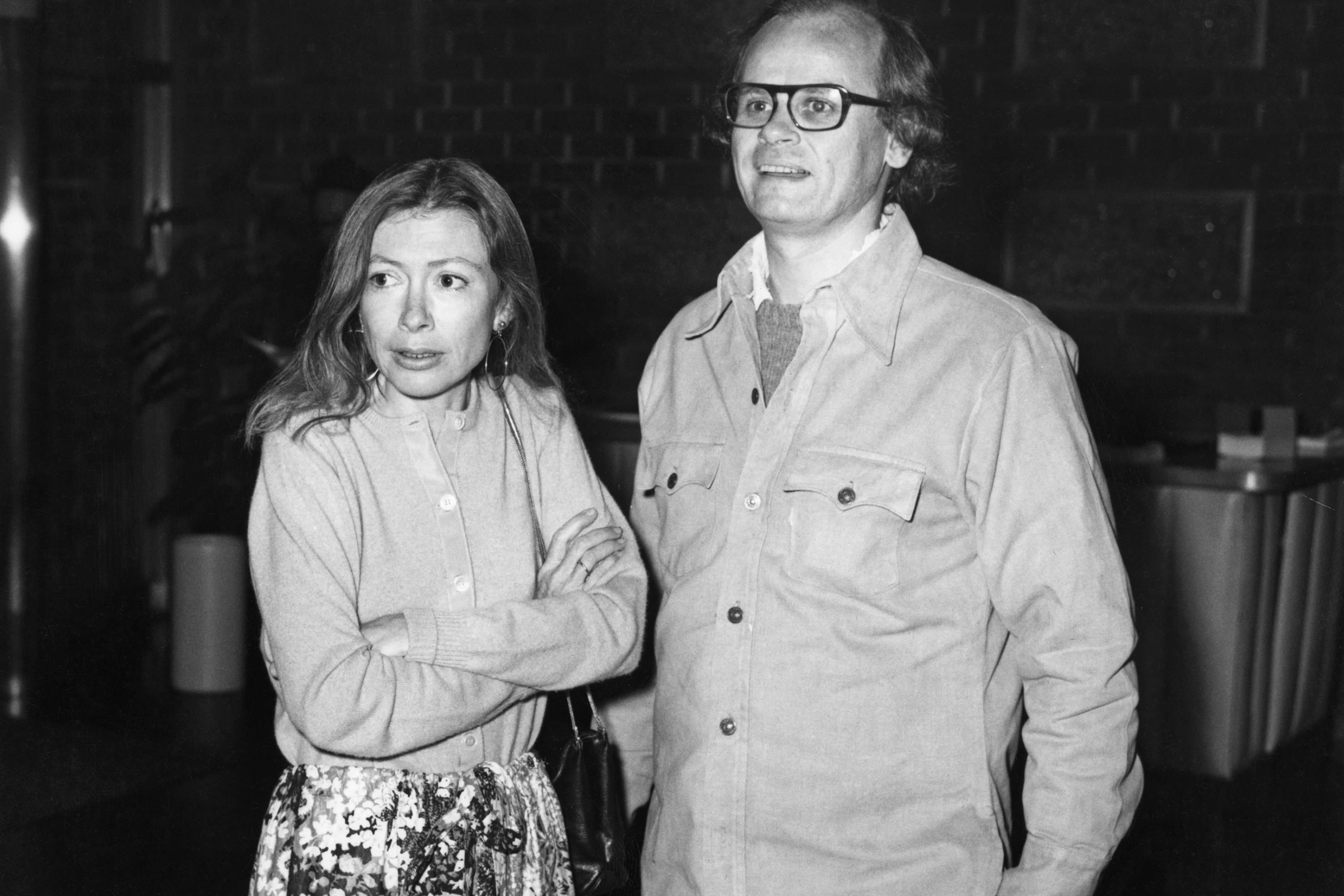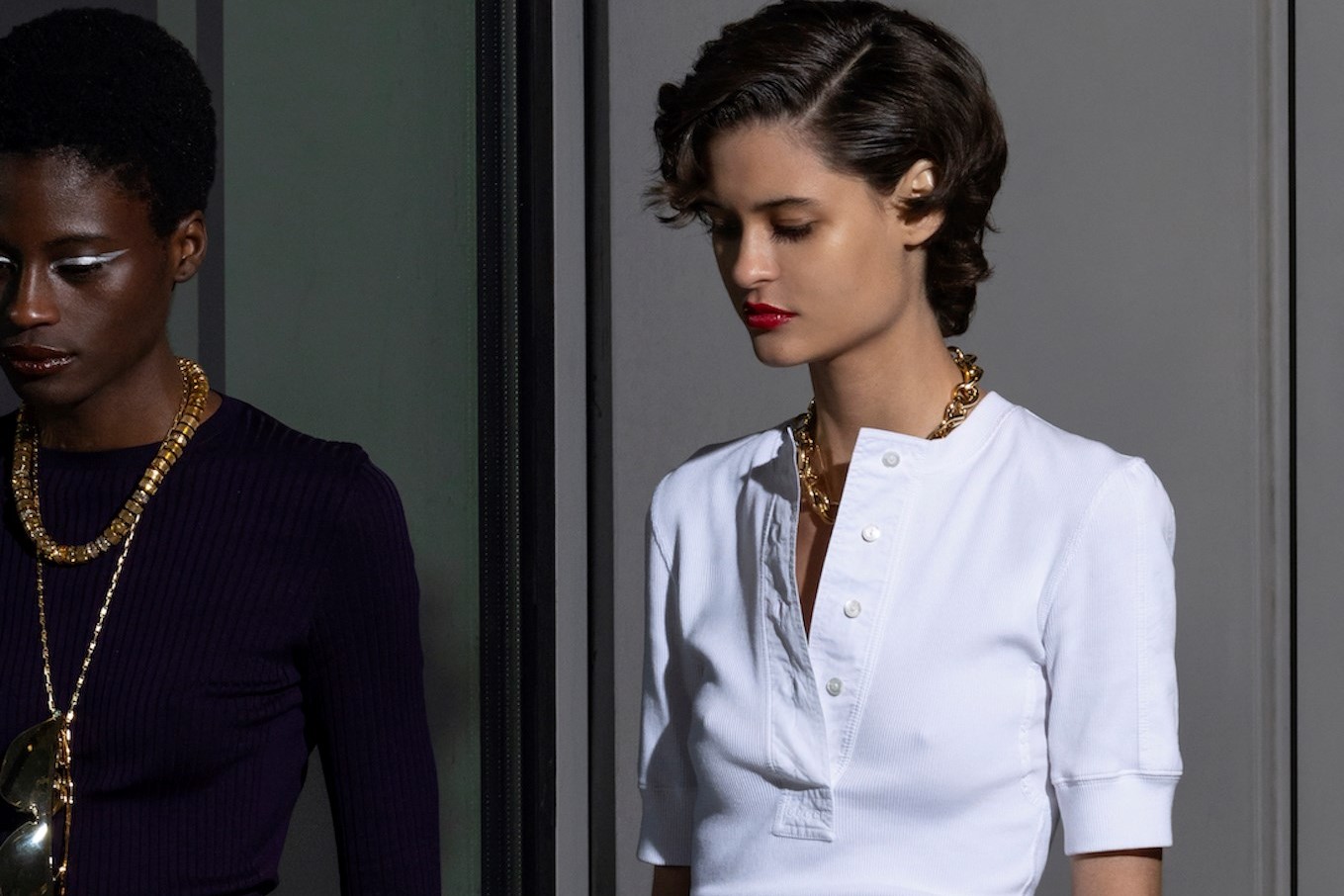If Raf Simons is known as a menswear designer whose ideas have shaped and reshaped the industry for almost a quarter of a century, his clothes have a universality that reaches far beyond that relatively narrow remit. He designs worlds, for people. “I want to see emotion and spirit and attitude,” he says. And the power of his clothes lies in his ability to make those ephemeral, romantic notions material, real.
Raf Simons was born in a place that no longer exists. Neerpelt, a small town about 60 miles to the east of Antwerp and close to the border with Holland, had a population of about 16,000. That sounds doom-mongering: there was no drama, no apocalypse – earlier this year, it was simply combined with another, nearby municipality, Overpelt. It’s now just called Pelt, which isn’t terribly inventive: the name comes from the Romans, who dubbed the area Palethe, meaning boggy land. That isn’t overwhelmingly interesting, and likewise, Neerpelt wasn’t notable for much, bar being the birthplace of Simons, and for the Klankenbos, the biggest sound-art collection in a public space in Europe. Which is weird, because music and art are two of few unifying factors in the diverse career of Simons – twin passions that are often reflected in his work, in unusual and electrifying fashion, inciting as much excitement in the onlooker as Simons feels inside.
Simons’ clothes have been inspired by rebellion, even insurrection, by the kind of subversion and transgression found more regularly in those other aforementioned facets of culture. More than anything else, Simons is inspired persistently, insistently, by youth, and his clothes continue to resonate with entire generations who feel, somehow, that Simons understand what it feels like to be in that moment and live their lives. He began his career in 1995, aged 27, with clothes that reflected the youth he himself was still living. He wanted to dress kids, even back then. “I was really out to find an audience, no matter how small, who could feel, ‘This is something I could connect with, something I feel like I can be part of,’’’ he told me. In the late Nineties, he began presenting collections in Paris that were brave, soulful and mesmerising, and set new goalposts in terms of how fashion perceived masculinity, and therefore how men can dress. Simons took the stuffing out of tailoring, dressed men in narrow black suits, not as a uniform of corporate greed, but one of youth. They are more akin to a school uniform than a wolf of Wall Street: a large number of his collections have used the vernacular of schoolboy and collegiate dress, twisted and reworked, volumes readdressed, as if the bodies are still changing inside. He created skinny black suits to reflect the skinny bodies of himself and his friends. His first collections were shown on video, on groups of streetcast models. His clothes were – are – mirrors of the world as a whole, and the world of Raf Simons specifically.
Simons’ childhood sounds normal. His father was a soldier, his mother a cleaner, and they still live in newly named Pelt. They are close – now physically, also. “I have a good relationship with my parents, but I did have complicated issues with them when I was younger,” he says. “Right now, at my age, I can talk so much better to my dad than when I was, let’s say, 14. When I started out with collections, even then, in the beginning I thought he really had zero interest. He didn’t come to shows. We also never talked about it. But seven seasons in, after I had done four collections, and then three shows – he came. Then I understood why he wasn’t coming, because he was very emotional. It was almost impossible for him to handle it. Sitting backstage alone, crying, with all the audience around him, because he was very emotional for me. So I felt that he was very proud. That was enough. We didn’t need to talk about it.” Simons is quickly moved to intense emotion, stymieing any Northern European stereotype. He’s cried at plenty of fashion shows, his own included. Other people have, too, myself included.
“I was really out to find an audience, no matter how small, who could feel, ‘This is something I could connect with, something I feel like I can be part of’” – Raf Simons
Simons’ connection with his mother was more direct and immediate. “My mum is very interesting to me. She always was. She’s a very creative person,” he says. “My whole life that I’ve been doing collections, she has had very specific opinions about them. She also tells me when she thinks something is ridiculous... She doesn’t have that ability to see things in a conceptual or narrative context. She can pull out beautiful pieces and, for the right reason, she could say, ‘That’s a very beautiful piece.’”
From those beginnings, there was no grand plan to design fashion at all, never mind to revolutionise men’s clothes in particular. Simons studied industrial design originally, not fashion, and wound up pigeonholed in menswear because two friends he planned to found a label with pulled out. So Simons fitted the clothes on himself. Those early videos feature men and women – you may not realise, they all look alike. And it is a fallacy to limit what Simons does to menswear – plenty of women buy his clothes, wear his clothes, love his clothes, occupy his world.
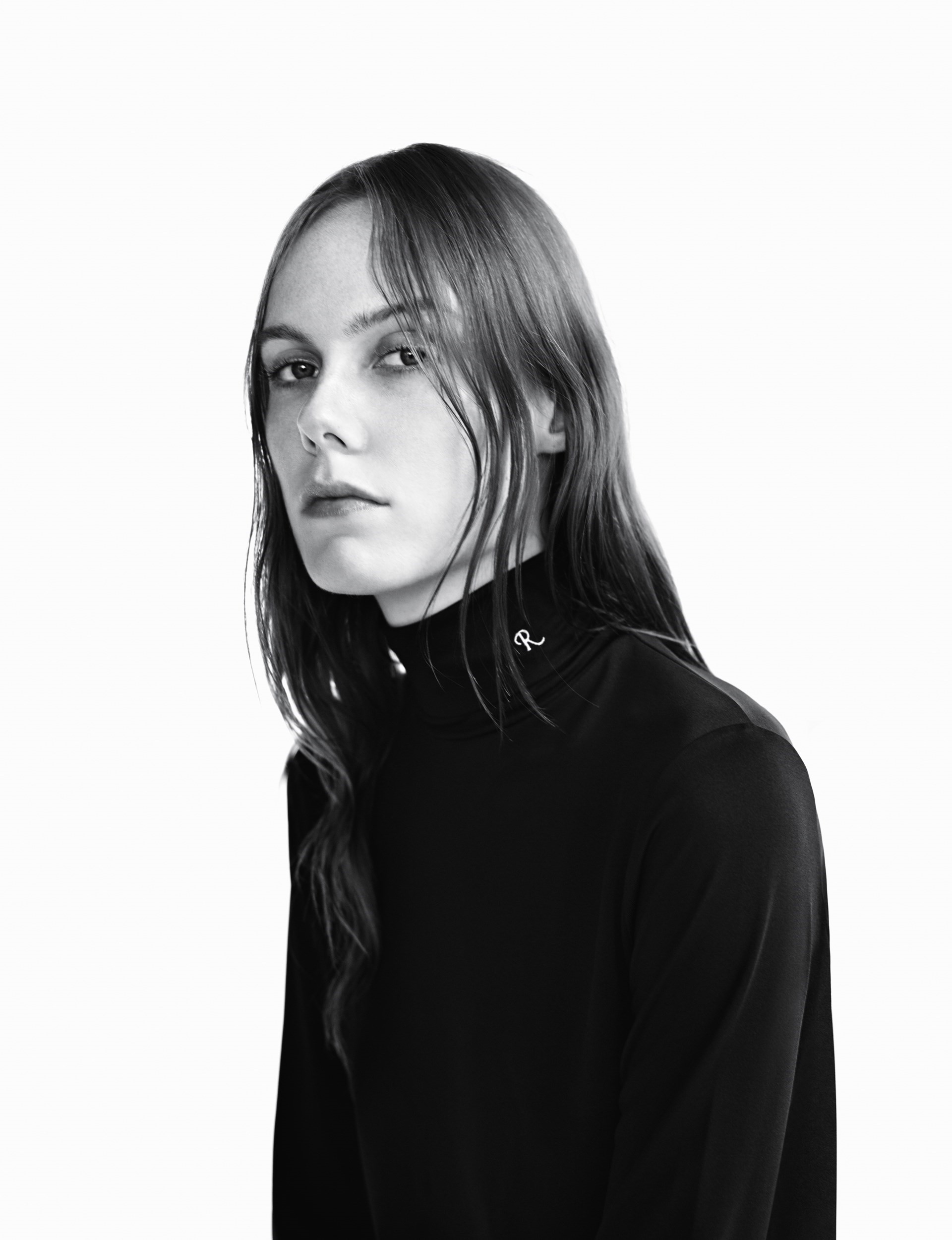
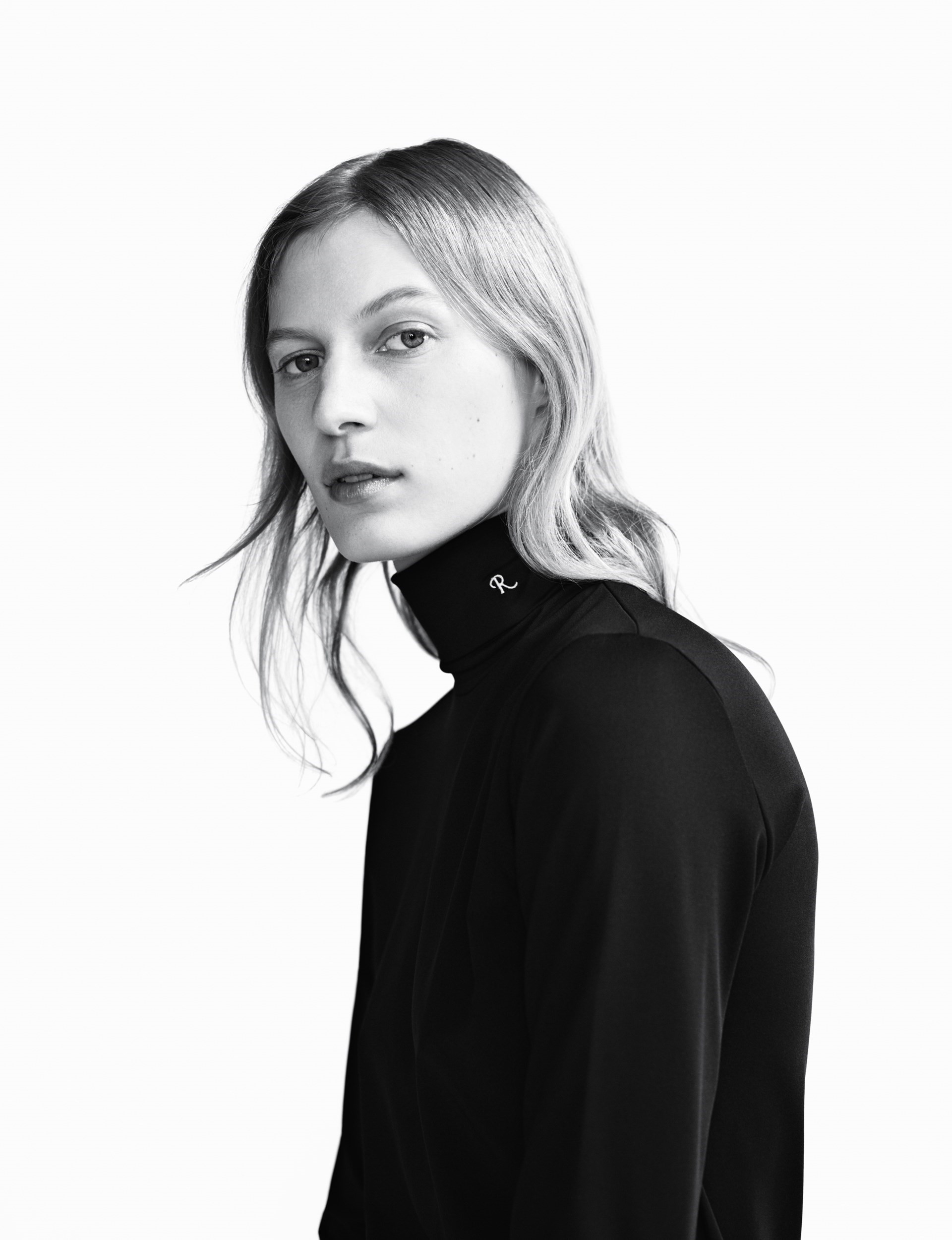
But granted, he is a menswear designer, first and, perhaps, foremost. When he was designing at Christian Dior, where he was women’s artistic director from 2012 to late 2015, he once described the world of haute couture as quintessentially feminine. So the distinction is important. Menswear even frames his womenswear enterprises: in the Nineties, the minimalism of Jil Sander – where Simons designed between 2005 and 2012 – was seen as a fusion of masculine with feminine, trite now, then revolutionary. The Calvin Klein label – at which, between August 2016 and December 2018, Simons was chief creative officer – originally rocketed to world fame through suggestive clothes for men rather than women, through jeans cut to cup a bulging crotch and underwear made patently, even blatantly, homoerotic (Klein’s women’s underwear was based on men’s). Even Simons’ three years at Dior became about translating a masculine sense of ease and practicality into that brittle, pin-heeled universe of the feminine. The first outfit he showed at Dior, significantly, was a black trouser suit. It was quite skinny.
Simons was one of the first modern designers – if not the very first – to focus primarily on creating directional, engaging clothing for men, not as an adjunct to womenswear designs. And the menswear Simons designed, designs, has changed the way men dress. Probably, the stuff he designs in the future will as well. But perhaps more exciting than the way they look is how Simons’ work has affected the way people feel, men and women alike. He is an unabashedly, undeniably emotional designer, eking out reactions to clothes that feel above and beyond the capabilities of many.
In July 2001 he showed an unwieldy, confrontational collection for Spring/Summer 2002 that was inspired by freedom fighters. In part, it was a reaction against the onset of globalisation. Barefoot models walked carrying tapers, their clothes marked up with slogans like palimpsests – one famously read ‘KOLLAPS’, which the world did just months later. These clothes were eerily prescient of the protests around the 27th G8 summit in Genoa, held later that month. The masked faces also drew later comparisons to terrorism and 9/11. In the aftermath, Simons thought his career was over: items from the show are now much sought-after by collectors.
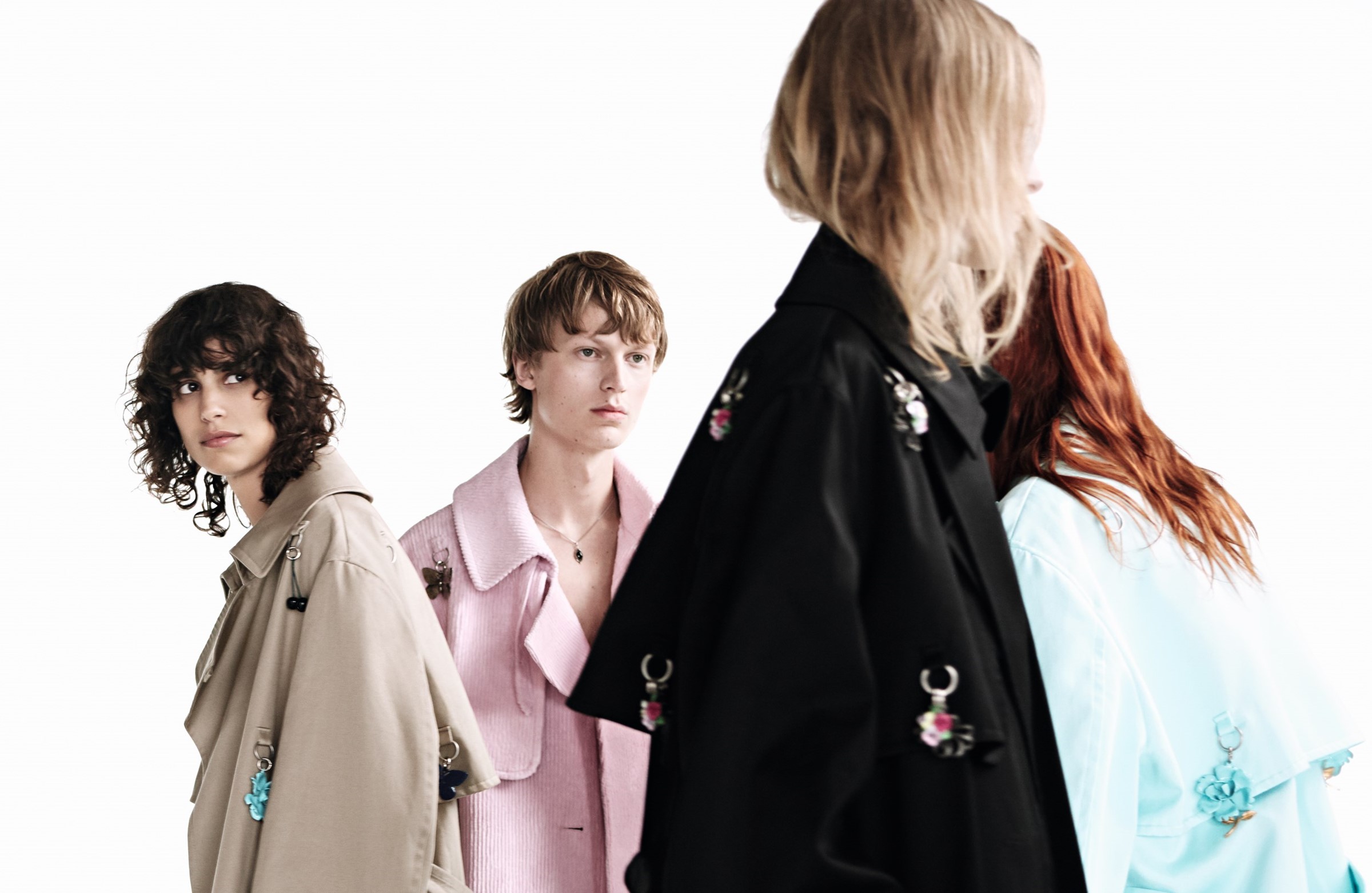
This January, Simons presented a collection under his own label – he called it Diptych. He said it was something he had always wanted to do – to present a collection in two parts. “It started out abstract because, since day one, I’ve been interested in the idea of showing a diptych collection – that one way is built up completely the same, and the other is completely the opposite,” he says. “Literally you can put boy one next to boy 26, and it’s identical. There is no different garment. The only thing that changed is the colour and the material.” Simons has long understood the power of repetition: early in his career, he created an Autumn/Winter collection he called Radioactivity and staged a show that culminated in a phalanx of boys wearing the scarlet shirts and black neckties aesthetically synonymous with krautrock pioneers Kraftwerk. This time, each look in the collection was conceived as a couple – the first half strictly focused on a masculine palette of white, maroon, black, camel; the second exploded into rich, brilliant colour and decoration, influenced by women’s haute couture. Grids of rings dangled tchotchkes or totems – roses, butterflies. Those were a reference to Yves Saint Laurent’s art-inspired capes, embroidered with flowers and animals in homage to Monet and Braque. Saint Laurent also informed the colour choices, of deep aquamarine and melon, blush pink and Yves Klein blue. Simons is open with his tributes: the strange hats, like helmets, were both references to mid-century couture, and actually, “a little Helmut”, according to him – specifically the dangling straps around the chin. “It’s also a direct reference to Martin [Margiela] – because at Martin’s second show, all the girls had that. They had it in leather. There is always a Martin reference. Hidden or not hidden.” Simons smiles.
“My last year was an extreme year. There were hearts and broken hearts. What I’m showing is what I think could be said. But I don’t want to force it... It’s not that I’m going to put a big broken heart on a T-shirt. I’m OK” – Raf Simons
The obsessions, fixations and loves of Simons don’t just inspire his collections, they suffuse them with emotion. It was when watching a Margiela show in the autumn of 1989 that Simons first decided he wanted to become a fashion designer: his admiration for Helmut Lang is also open. But those are two of very few fashion references Simons is in love with. Growing up, he was drawn to music, to the clothes bands wore – not just Kraftwerk, but Joy Division and Depeche Mode. “Nothing to do with fashion,” he says now. In his early twenties, he discovered David Lynch. “I was at university when all that happened – Twin Peaks, Blue Velvet,” he says. “Twin Peaks – I cannot even explain it. It’s not like now where you can see five episodes after one another. For a whole week, it would be the only thing we would talk about, and then we would gather together to watch.” Joy Division samples – bootlegs, recorded by a producer during rehearsals – played before Simons’ most recent Autumn/Winter show. Stills of a 19-year-old Laura Dern, pulled from Blue Velvet, were printed on patches, appliquéd onto coats and sweaters, as if pasted on a teenage wall in homage. “She means the world to me,” Simons said backstage breathlessly. Dern was there at the show, in a big black satin Raf Simons coat, watching herself go by.
Simons has mined Lynch before – after he left Christian Dior, his Autumn/Winter 2016 show was inspired by Twin Peaks – it was even shown on Lynch’s birthday. “After the Twin Peaks show, he got in touch,” says Simons of Lynch. “He’s very pleased. Otherwise he wouldn’t do that. And we should meet now, I think. And he thinks so, too. But the thing is, David is also partly in another world. He invited me, but then I couldn’t do it. I also think maybe I wasn’t ready for it.” Perhaps now is the time. Simons still hasn’t met Kraftwerk either, FYI.
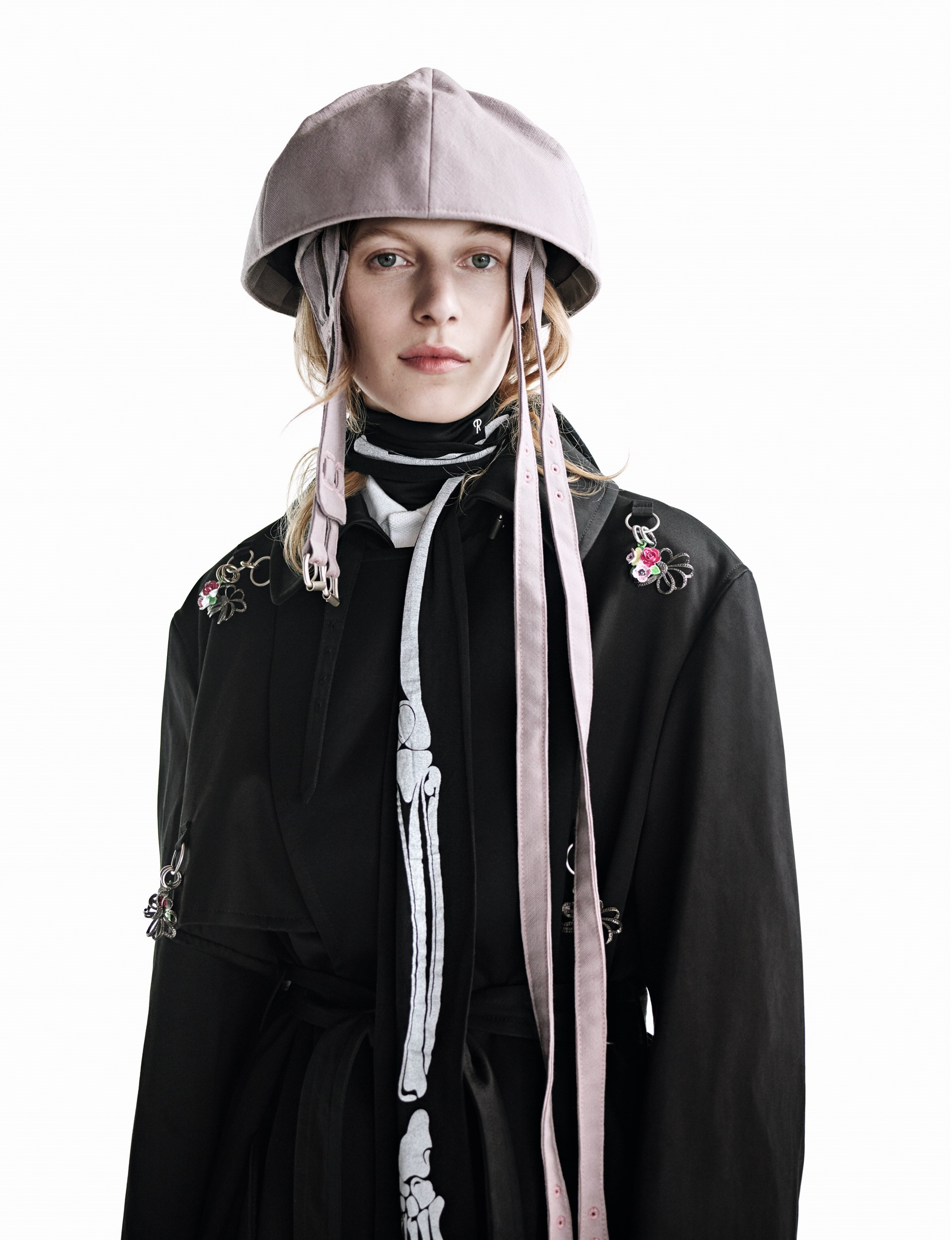
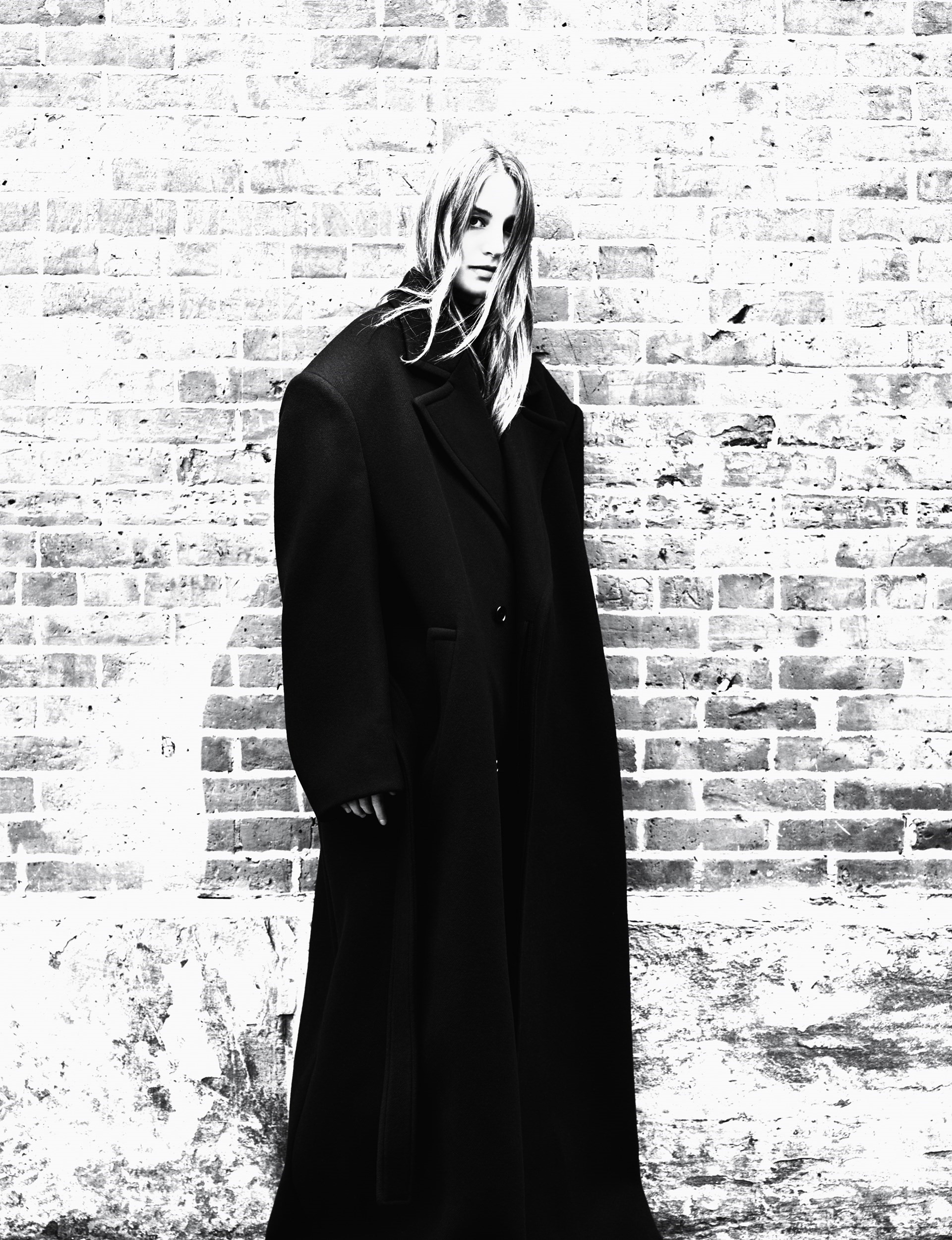
Of this show, Simons allows, “It was very much going back to those early days – Joy Division, Blue Velvet, Twin Peaks.” It was also the beginning of a bigger return – Simons’ own-label studio used to be based in New York, where the designer has also lived. Post-Calvin Klein, Simons has moved back to Antwerp. “It’s the city where I’ve been for almost 30 years now,” he says. “That doesn’t mean I’m always going to sit and stay in Antwerp, but it’s definitely my place. Antwerp’s my place.” Emotion is also inevitably involved: “My last year was an extreme year. There were hearts and broken hearts. What I’m showing is what I think could be said. But I don’t want to force it.” He pauses. “It’s not that I’m going to put a big broken heart on a T-shirt. I’m OK.”
Simons’ time at Calvin Klein is remarkable not for its brevity but its bravery, and the depth and richness of the imagination he brought to the behemoth brand. Ultimately, the Möbius-like complexities of corporate America were not for him: his June 2019 own-label show, for Spring/Summer 2020, was a comment on it, a shift away from the quiet, couture-tinged offering of January. Shown on a violent violet carpet like infected grass, his models resembled survivors, wrapped in surgical scrubs and great gauntlet gloves. Clothing as protection. He played Culturcide’s Star-Spangled Banner, with its closing line of: “media America, corporate America, consumer America, fascist America”. Many, understandably, took it as a swipe against the American world of big business that he had, until very recently, been a big part of – but Simons isn’t onanistic: this wasn’t about his own experiences but a wider comment on the world at large, the problems within it – the effect of big business on creativity at all levels, music, art, and of course, fashion. It was also another return to roots, mining a similar feel as that Spring/Summer 2002 show, which was titled Woe onto Those Who Spit on the Fear Generation... The Wind Will Blow It Back.
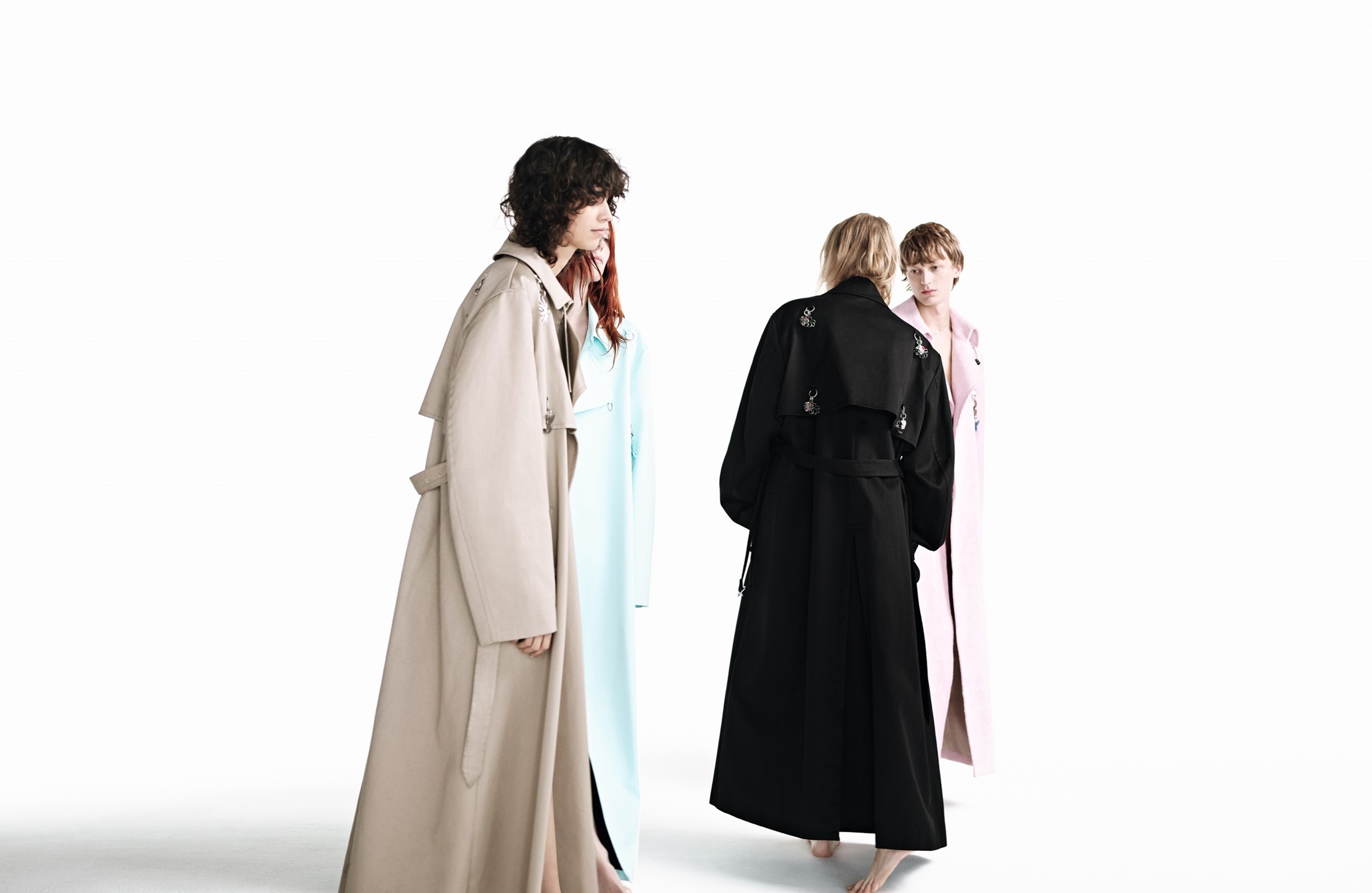
Simons smokes a cigarette. He’s in a vast showroom on the outskirts of Paris, not far from the Gare du Nord, all glass and steel. There are lots of clothes around – we meet first after his January show, a second time after that show in June. We’re talking more about clothes. I don’t push Simons to discuss Calvin Klein further, for two reasons: partly because of the standard legal agreements in place that he will not discuss his departure, and also because Simons’ solo story is more interesting and, oddly, less explored. His business is small – but may be better described as precise and focused. Simons resists the urge to go big. One of the most intriguing things about his base in menswear is that it kept him under the radar: many members of the press didn’t know his name before his appointment at Jil Sander. At the start of his career, he didn’t bow at the end of his fashion shows (again, akin to Margiela, emulation being a sincere form of flattery). He also, even now, does relatively few interviews and generally doesn’t enjoy speaking after his shows. The majority of his career has been based in Antwerp, a city that, like Simons, punches hard in terms of influence but is a little obscure. Even if everyone knows their names. And people do know Raf Simons’ name; A$AP Mob has a song simply called Raf.
“I don’t know if it is because I understand them or because they understand me. I have always thought – and will never change my mind – that children and kids, youth, are our future” – Raf Simons
Simons’ work is powerful. Its power isn’t in the when, or even the what, but rather the why. Although, granted, those first two can be powerful also – the when being Simons’ uncanny ability to chime with cultural shifts, sometimes even to preempt them; the what being those skinny, silhouette-shifting suits. Yet the fascinating part is the why: why does Simons create the clothes he does? And why is it that, although he is now 51, his work can still speak so profoundly and continually to new generations?
“I want to know more,” Simons says. He’s talking about those new generations, his new audiences. New fans. “I want to understand it better,” he continues – ‘it’ meaning the youth of today, grouped as a collective noun, which perhaps ‘it’ simply can’t be. But Simons is nevertheless curious about how young people, as an entity, think and feel, about what draws them to his work, and indeed why. “What gives me enormous satisfaction is that we have an incredible following from a young crowd,” he says. “I don’t know if it is because I understand them or because they understand me. I have always thought – and will never change my mind – that children and kids, youth, are our future. That’s by definition the case, so that’s also why it’s important to pay attention. Whatever we think, it’s important to pay attention.”
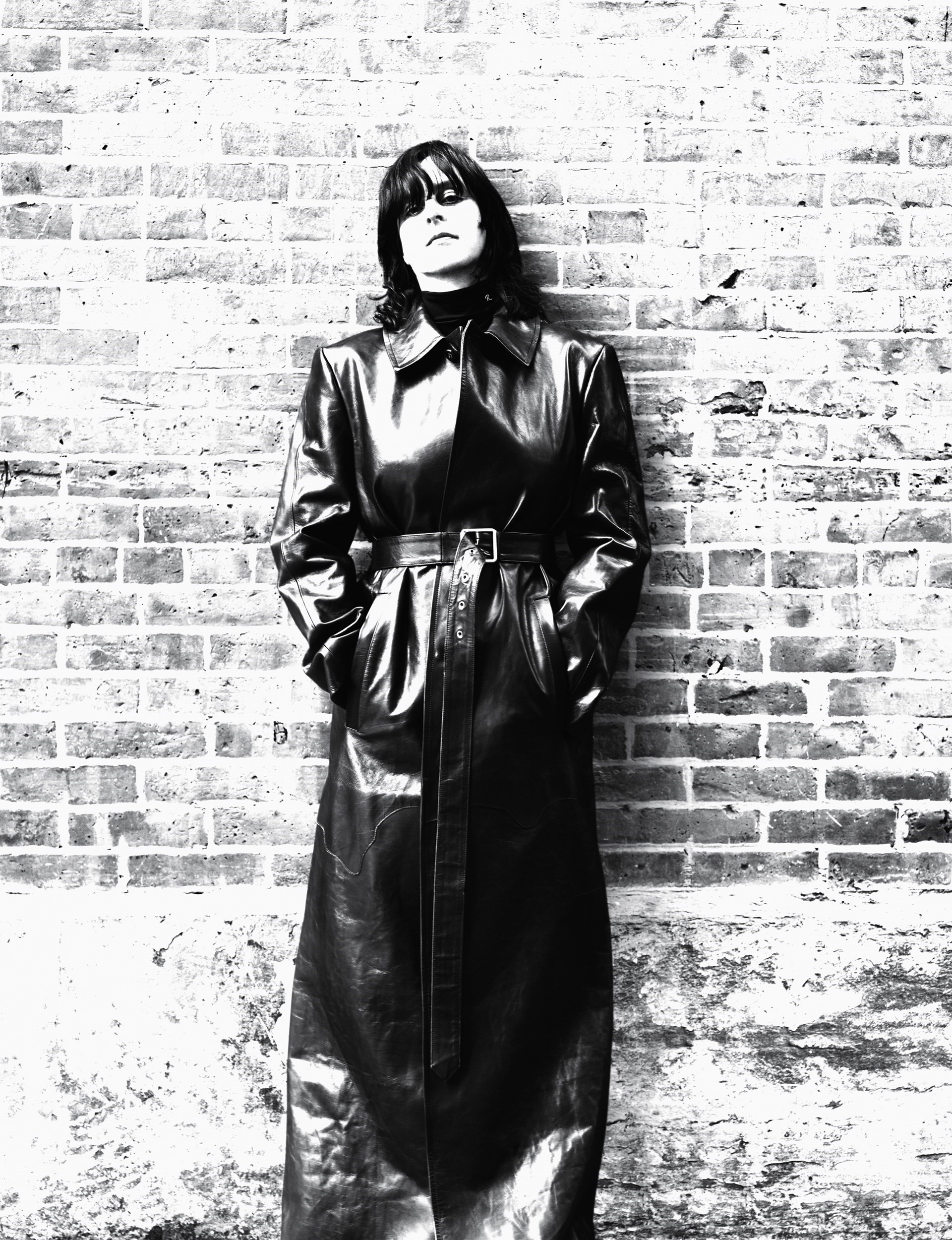
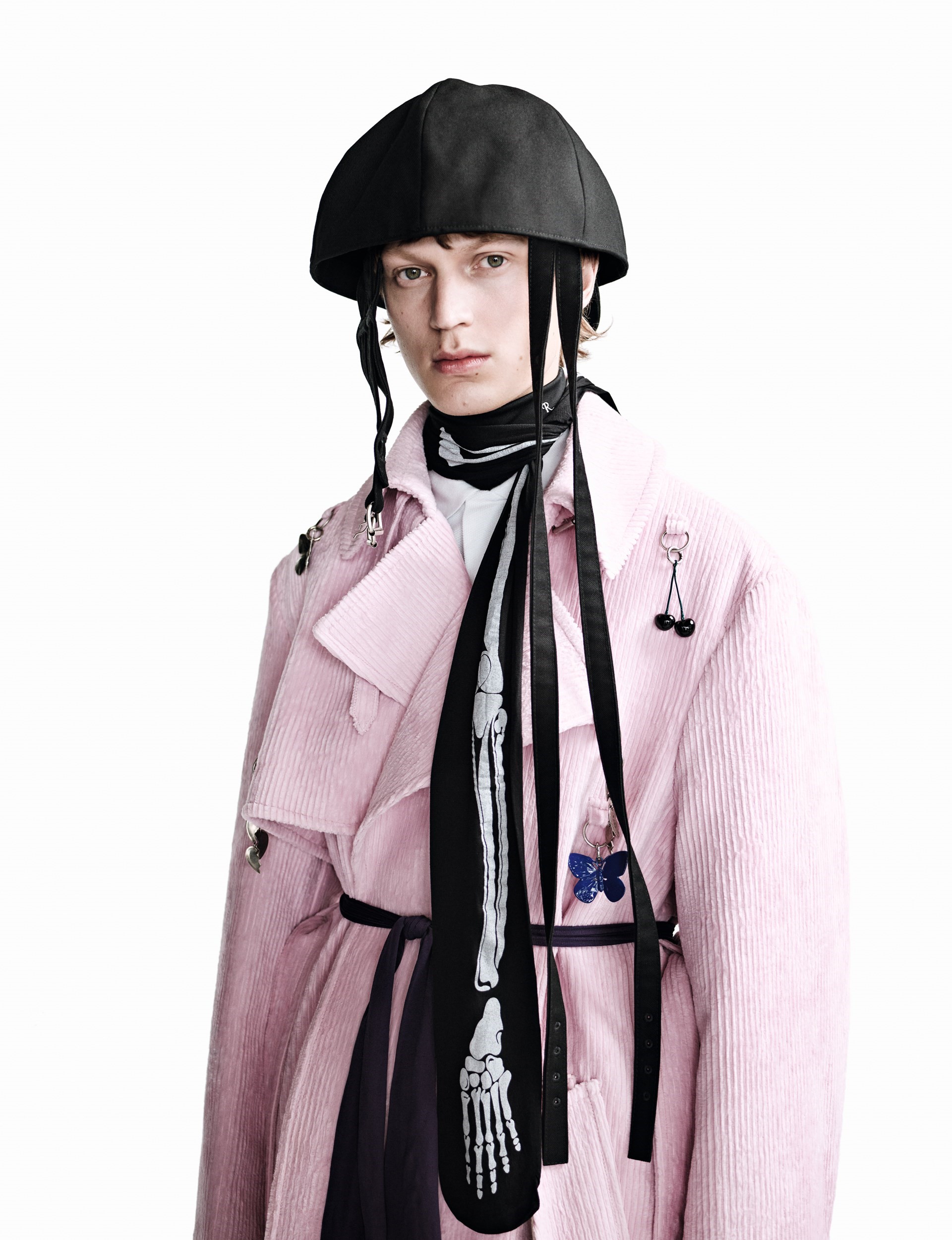
Weirdly, Simons has explored that theme often and directly in his clothing – the notions of intergenerational communication, which his clothes are perhaps now an example of. The video presenting his Spring/Summer 1997 collection was titled, enigmatically, 16, 17, How to Talk to Your Teen, taken from a parenting pamphlet. “Make time for your teen,” it also advised. “Listen, really listen [ … ] Tolerate differences.” Simons’ Spring/Summer 2020 collection had patches bearing the phrase “15/16 How to Text Your Teen”, as though a 21st-century update.
Simons is interested in the way they operate, he says. “And the way they... ‘consume’ is the wrong word... the way they deal with the things that we might have done differently is not clear to me yet,” he says. “I don’t even know if it will ever be clear, because that is what makes one generation [distinct from] another generation.” He stops. Thinks. “I am curious. I know how my generation processes this but I do not know how an 18-year-old processes this. I don’t know if they look at it, and see it, and embrace it for the same reasons as the people from my generation. I also don’t find it important that they embrace it for the same reasons. That doesn’t matter at all to me, how they embrace it or not. Or how they reject it or how they translate it for themselves, how they use it or how they understand. I’m more curious about how it works for them.”
He isn’t talking about his own clothes – about why Raf Simons works for generation after generation of young people. Maybe because, universally, those generations are searching for what Simons himself searches for: truth, belief. Perhaps.
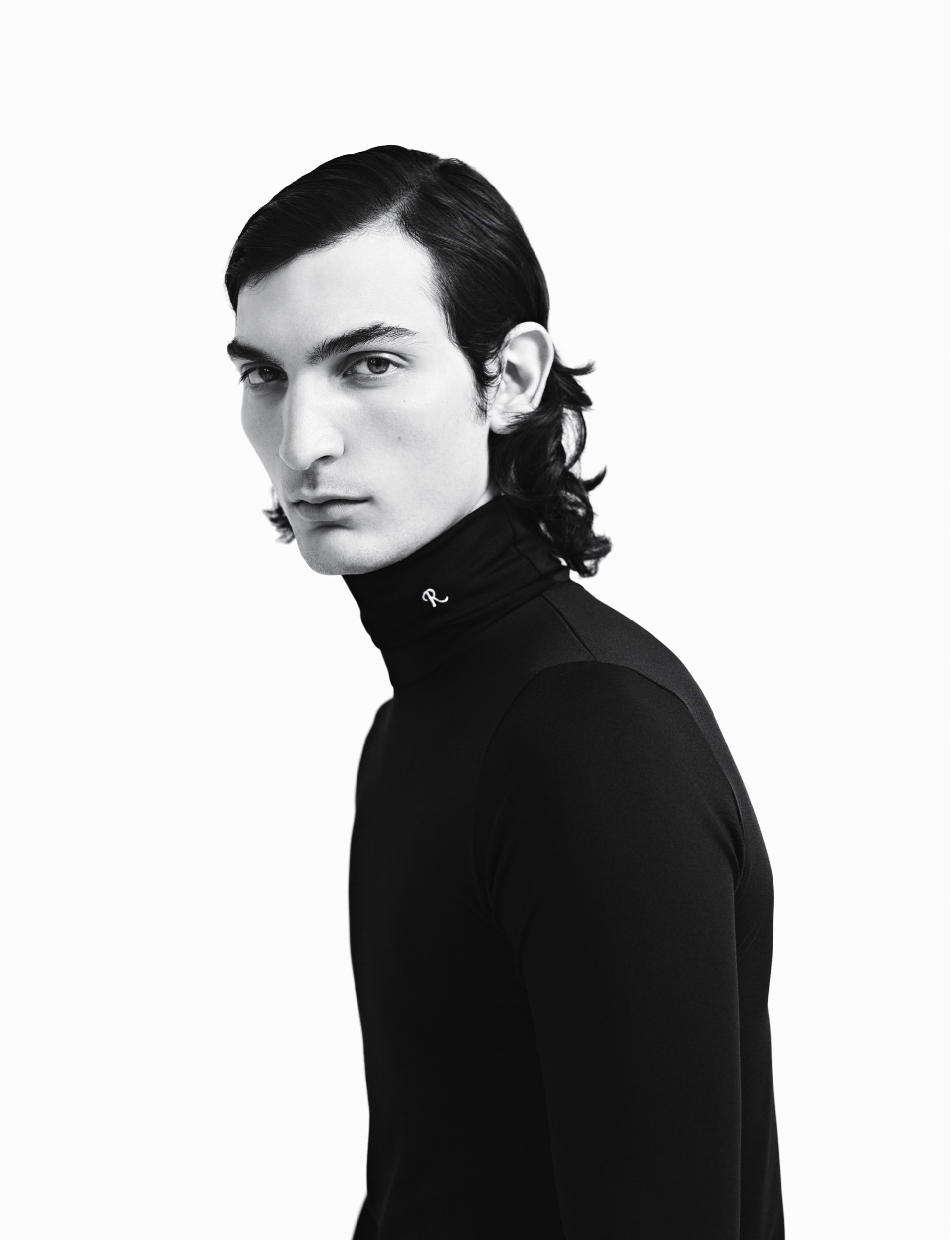
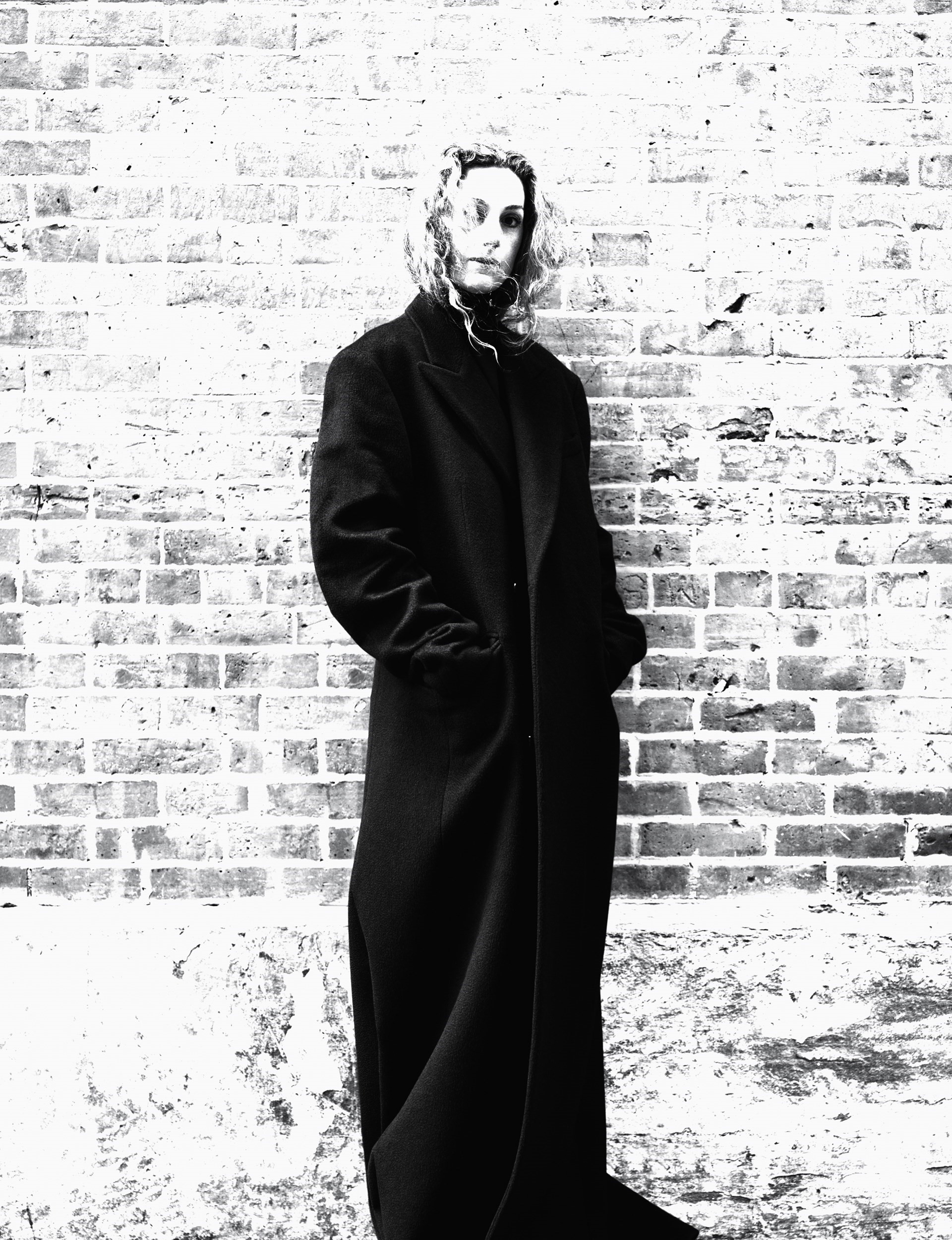
“You go into shops and you see all these clothes. It’s not so difficult to put beautiful pieces out, and I would be happy with pieces, but if I don’t believe in the total body of work this designer is bringing out, I can’t do that. I need to connect to the thinking. That’s why I’m a Miuccia Prada fan – even if she does a collection that I hate, I would find something, and I would still buy it, because I believe in her total world,” he says. “Maybe I am somebody who needs a message. There are beautiful pieces, but if it doesn’t really say something that makes me think, that makes me happy or angry or sad or at least do something with my emotions, or with my brain... If it doesn’t do that I also don’t really need it.”
Here’s what Simons did – does, will do – that marks him out. His cut directly shaped a decade or so of clothing, influencing countless designers after him. It still resounds, inspires, is copied respectfully and slavishly. It shifted the way clothes were made, their rapport with the body, and therefore how people felt inside them – not just in the slim-line suits of the Nineties but, just as the rest of the industry caught up with that, in a later shift to oversized layers, still being referenced, dissected and digested. Simons uses text on garments arguably better than anyone else. In terms of impact, you can only find similar import when looking at the printed Seditionaries muslins of Vivienne Westwood and Malcolm McLaren (‘KOLLAPS’ is quite similar to ‘DESTROY’) and the tub-thumping silk T-shirts of Katharine Hamnett. But Simons’ use of text is more intriguing – he doesn’t want to save the world, nor destroy it. But he does reflect it – especially the proliferation of messages, the bombardment of media in the modern age. To go old school, back at Jil Sander, Simons first demonstrated a colour sense that puts him right up there with Saint Laurent – meaning he can reference him, just as he can reference Margiela and Lang. Because he’s on a certain level. Because he’s great. Because he believes, not only in what they did but in what he does.
And that means we can too.
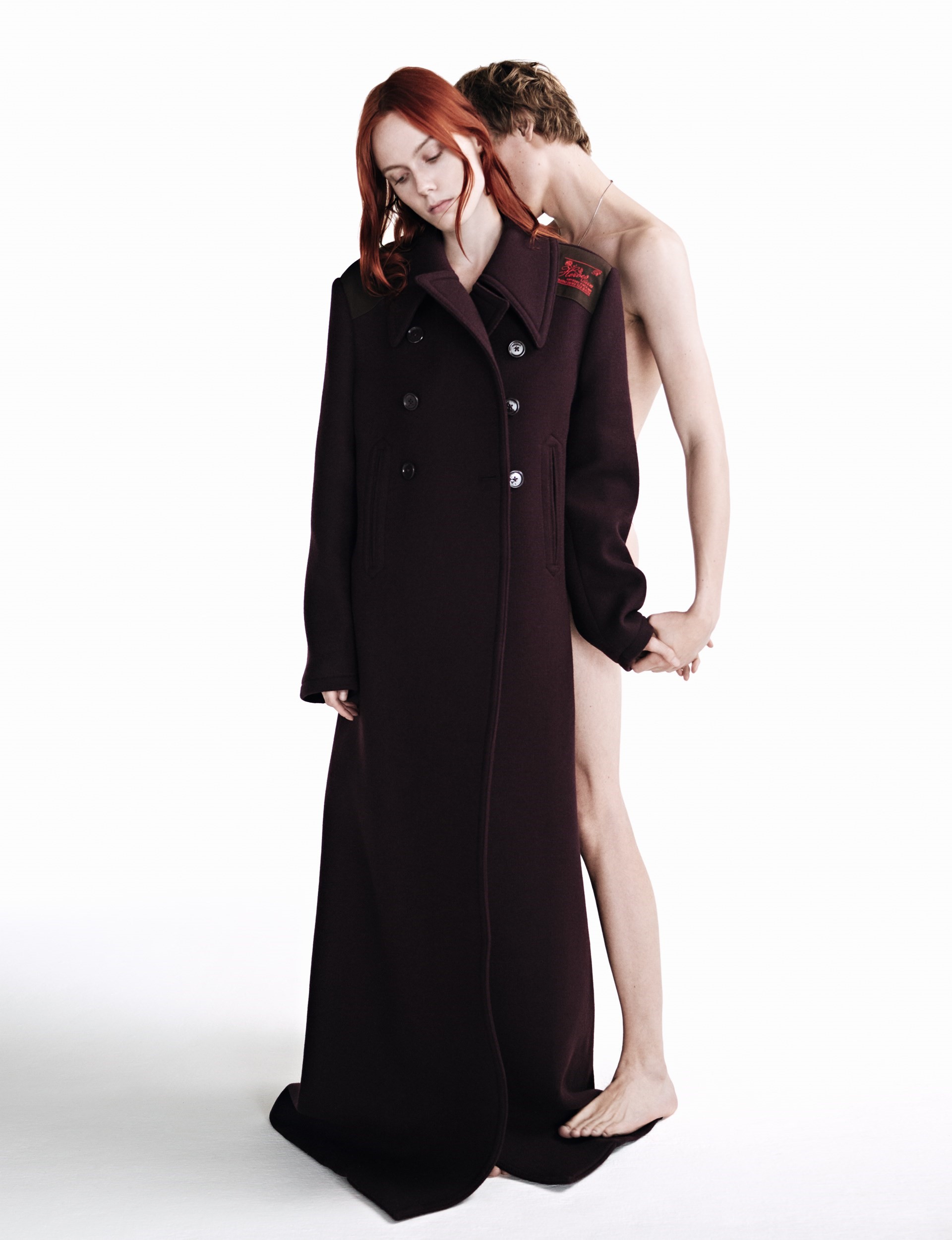
All clothing and accessories by Raf Simons
Hair: Tina Outen at Streeters using Bumble and Bumble. Make-up: Sil Bruinsma at Streeters using Retrouvé Luxury Skincare. Casting: Ashley Brokaw. Models: Julia Nobis, Mica Argañaraz and Kiki Willems at DNA, Jonas Glöer at Tomorrow Is Another Day and Luca Lemaire at The Identity. Special thanks to: Laura Hawtin-Käding, Els Arnols and Bianca Quets-Luzi. Manicure: Isadora at Melbourne Artists Management NYC. Digital tech: Henri Coutant. Lighting: Romain Dubus. Photographic assistant: Will Takahashi. Styling assistants: Niccolo Torelli, Jose Miguel Dao and Helen Franco. Hair assistant: Bibb Dickey. Make-up assistant: Lisa Campos. Executive producer: Simon Malivindi. Production: One Thirty-Eight Productions. Production assistants: Eleonora Trullo and Tom Hennes. Post-production: Triplelutz
This story originally featured in the Autumn/Winter 2019 issue of AnOther Magazine, which is on sale internationally from 12 September 2019.
